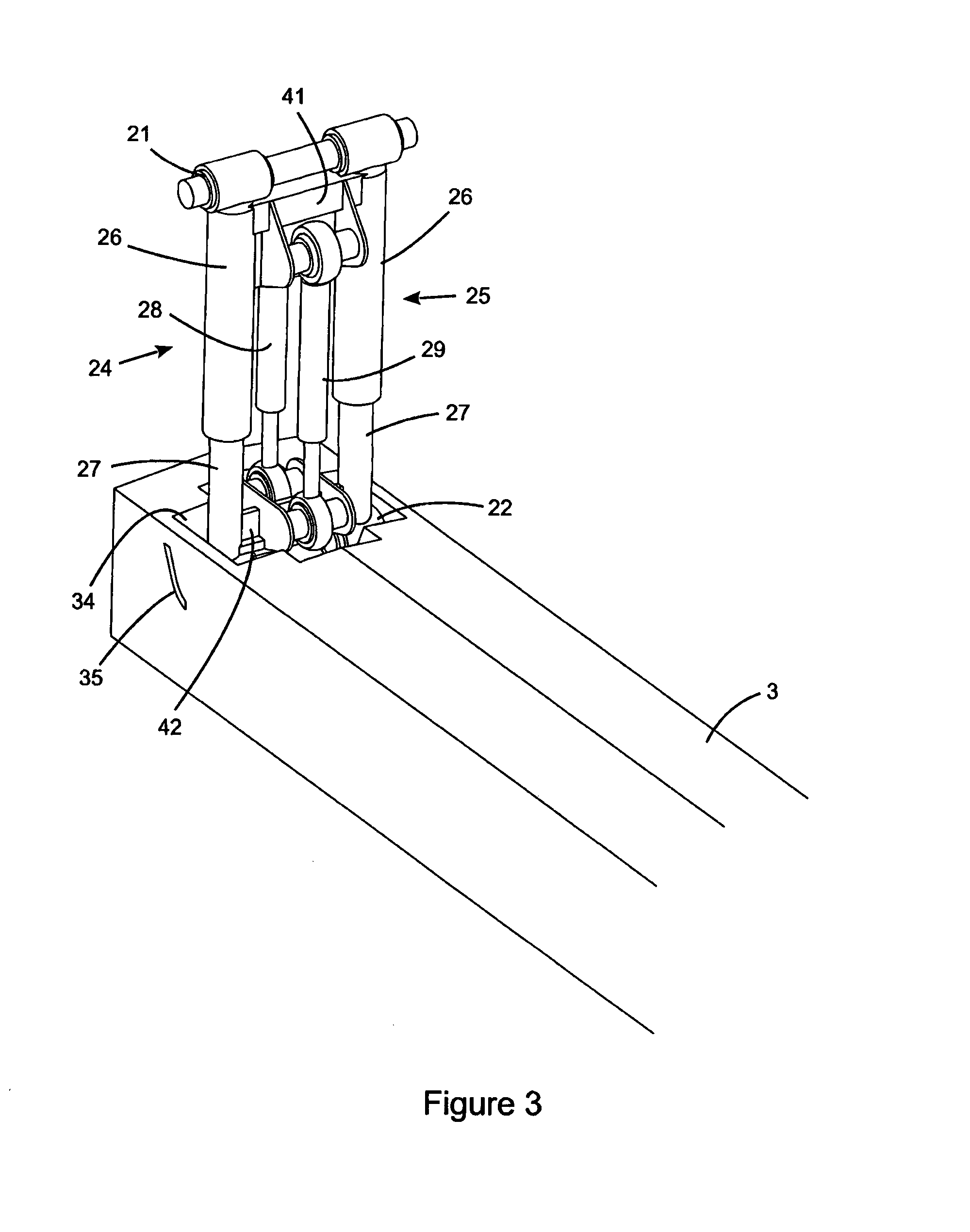Improvements to multi-hull vessel suspension geometry
a multi-hull, suspension technology, applied in the field of watercraft, can solve the problems of increasing the friction of sliding joints, reducing the life and ride comfort of joints, and more bending induced into the body and/or hull
- Summary
- Abstract
- Description
- Claims
- Application Information
AI Technical Summary
Benefits of technology
Problems solved by technology
Method used
Image
Examples
Embodiment Construction
[0042]Referring initially to FIG. 1 there is shown a catamaran 1 with a main body 2 suspended above the independently moveable hulls 3. The gunnels on the near side are omitted to fully expose the cabin 4 and the hull locating arrangement for the visible hull. The hull locating arrangement comprises a back hull locating linkage 6 and a front hull locating linkage 7.
[0043]The front locating linkage shown includes a leading arm 8 rotatably connected to the body 2 by pivot 9 such as bearings or bushings and rotatably connected to the hull 3 by pivot 10. This provides lateral, longitudinal and roll constraints to the motion of the hull relative to the body. Although it can also provide a yaw constraint, the use of a second lateral constraint at a longitudinally spaced position (i.e. the back locating linkage) generally provides most of the yaw reaction. A front support means 11 (such as a spring damper unit or one or more hydraulic cylinders) is provided, packaged inside a suspension to...
PUM
 Login to View More
Login to View More Abstract
Description
Claims
Application Information
 Login to View More
Login to View More - R&D
- Intellectual Property
- Life Sciences
- Materials
- Tech Scout
- Unparalleled Data Quality
- Higher Quality Content
- 60% Fewer Hallucinations
Browse by: Latest US Patents, China's latest patents, Technical Efficacy Thesaurus, Application Domain, Technology Topic, Popular Technical Reports.
© 2025 PatSnap. All rights reserved.Legal|Privacy policy|Modern Slavery Act Transparency Statement|Sitemap|About US| Contact US: help@patsnap.com



